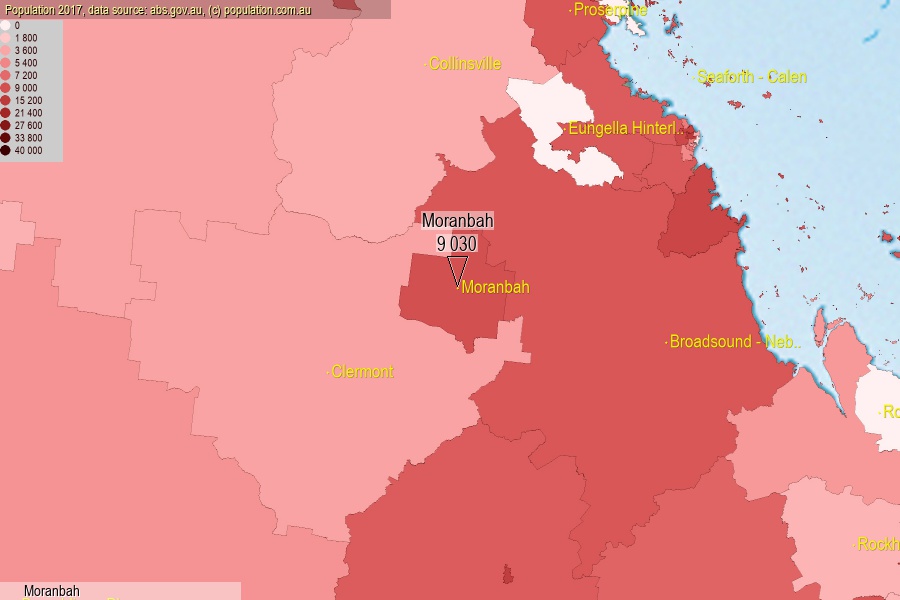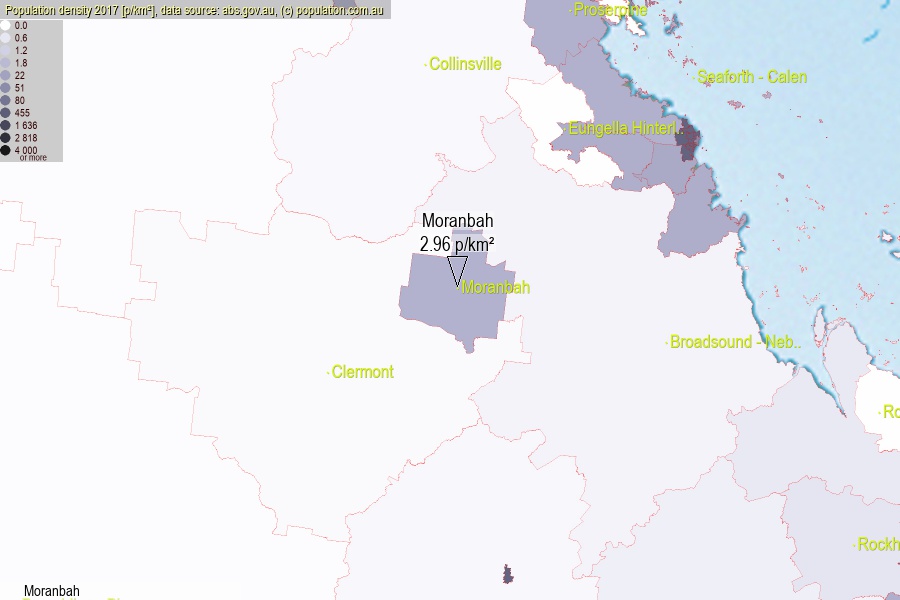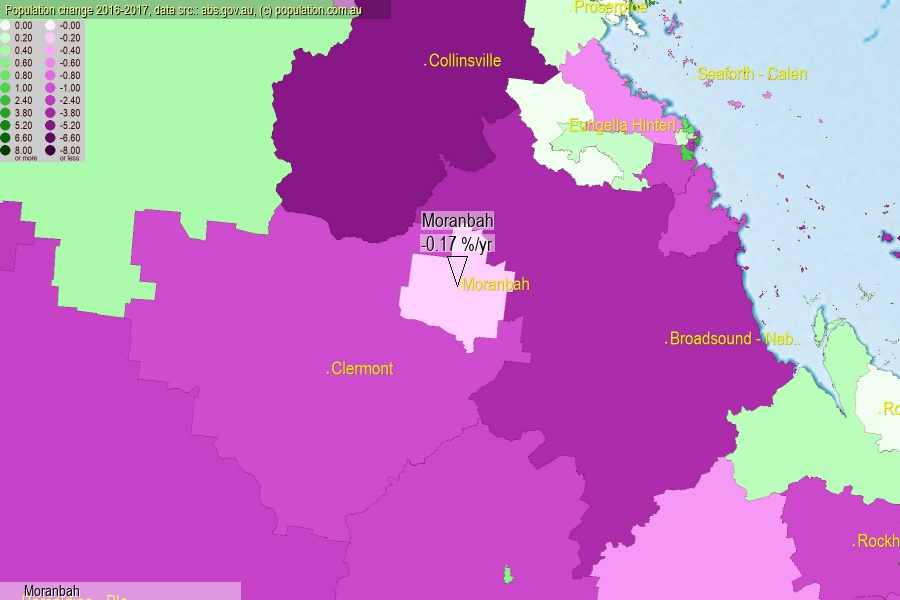 population.com.au
population.com.auLast official estimated population of Moranbah (as Statistical Area Level 2) was 9 030 people (on 2017-06-30)[2]. This was 0.04% of total Australian population and 0.181% of QLD population. Area of Moranbah is 3 046.60 km², in this year population density was 2.96 p/km² . If population growth rate would be same as in period 2016-2017 (-0.17%/yr), Moranbah population in 2025 would be 8 911. [0]



Click to enlarge. Moranbah is located in the center of the images.
Population [people], population density [p./km²] and population change [%/year] [2]
View borders » (new window) [4]
[1991-1992] +0.22 %/Yr.
[1992-1993] +0.06 %/Yr.
[1993-1994] -1.64 %/Yr.
[1994-1995] -1.53 %/Yr.
[1995-1996] +0.25 %/Yr.
[1996-1997] +0.30 %/Yr.
[1997-1998] +0.21 %/Yr.
[1998-1999] -2.37 %/Yr.
[1999-2000] -1.15 %/Yr.
[2000-2001] -0.81 %/Yr.
[2001-2002] +3.92 %/Yr.
[2002-2003] +3.18 %/Yr.
[2003-2004] +0.86 %/Yr.
[2004-2005] +2.39 %/Yr.
[2005-2006] +5.02 %/Yr.
[2006-2007] +4.44 %/Yr.
[2007-2008] +4.73 %/Yr.
[2008-2009] +3.77 %/Yr.
[2009-2010] +3.02 %/Yr.
[2010-2011] +4.00 %/Yr.
[2011-2012] -0.12 %/Yr.
[2012-2013] -0.44 %/Yr.
[2013-2014] -0.83 %/Yr.
[2014-2015] -0.28 %/Yr.
[2015-2016] -0.06 %/Yr.
[2016-2017] -0.17 %/Yr.
[0] Calculated with linear interpolation from officially estimated population
[1] Read more about SA2 and Australian Statistical Geography Standard (ASGS) on abs.gov.au
[2] Population data from Australian Bureau of Statistics (Population and density: 2017; change: 2016-2017)
[3] Digital Boundaries: Australian Statistical Geography Standard (ASGS) 2016.
[4] Border coordinates are simplifyed using Ramer-Douglas-Peucker algorithm.